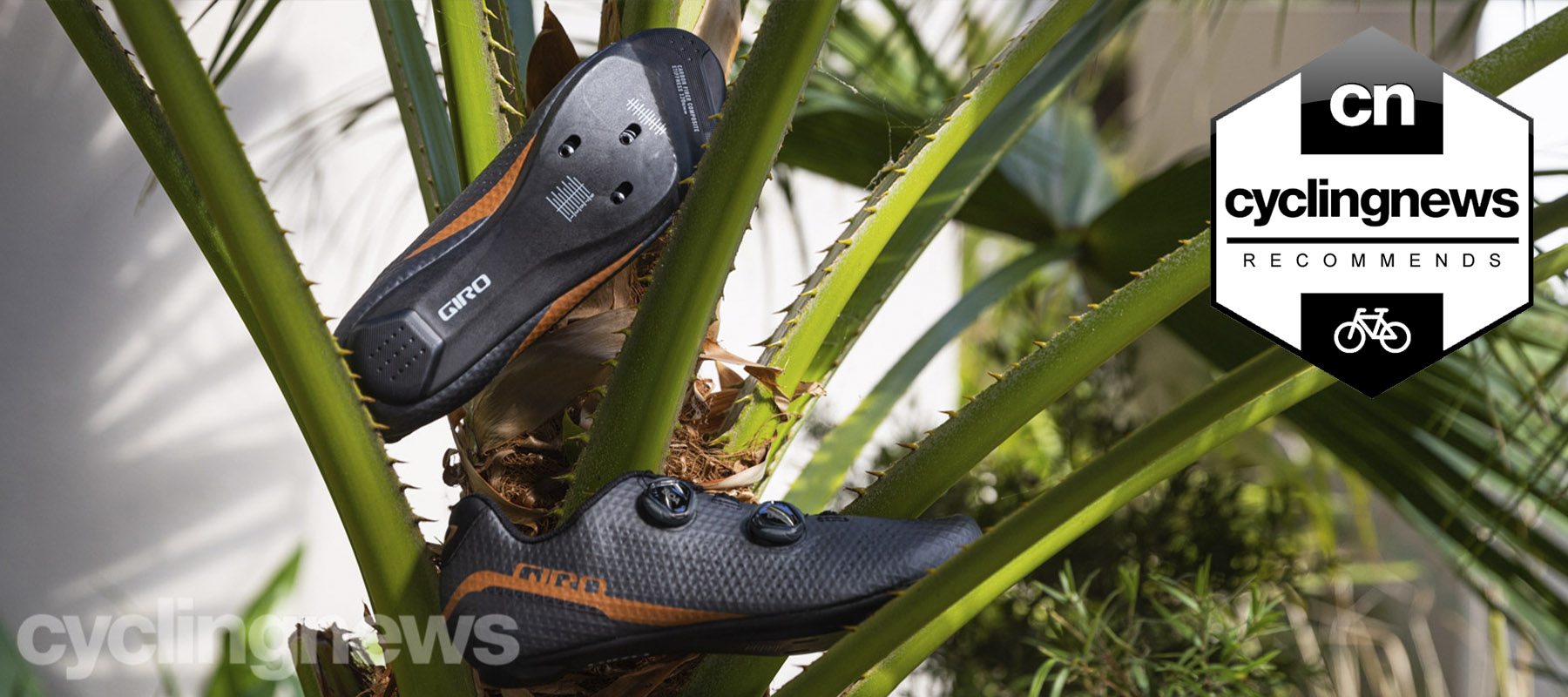Cyclingnews Verdict
The only thing we'd change about these shoes is the Boa L6 dial arrangement, but the fit, performance and comfort are damn-near perfect
Pros
- +
Synchwire upper
- +
Carbon composite sole provides ample stiffness
- +
5mm of cleat hardware adjustability
Cons
- -
Boa L6 dials only spin in one direction
You can trust Cyclingnews
When the Giro Imperial road shoe was launched, it was the first time the brand had used dual Boa retention on a pair of tarmac-fairing kicks. The resulting shoe is what many had been asking from the brand for some time with two IP1 reels and the brand’s WorldTour-stiff Easton SLX2 carbon sole pitching it squarely as a contender for the best cycling shoes.
Aimed squarely at eking every single watt out of each pedal stroke, the Imperial also cost a pretty penny - luckily, for those who don’t have the budget, Giro has parlayed some of the technology that set these shoes apart into a more wallet-friendly offering, the Regime.
Design and aesthetics
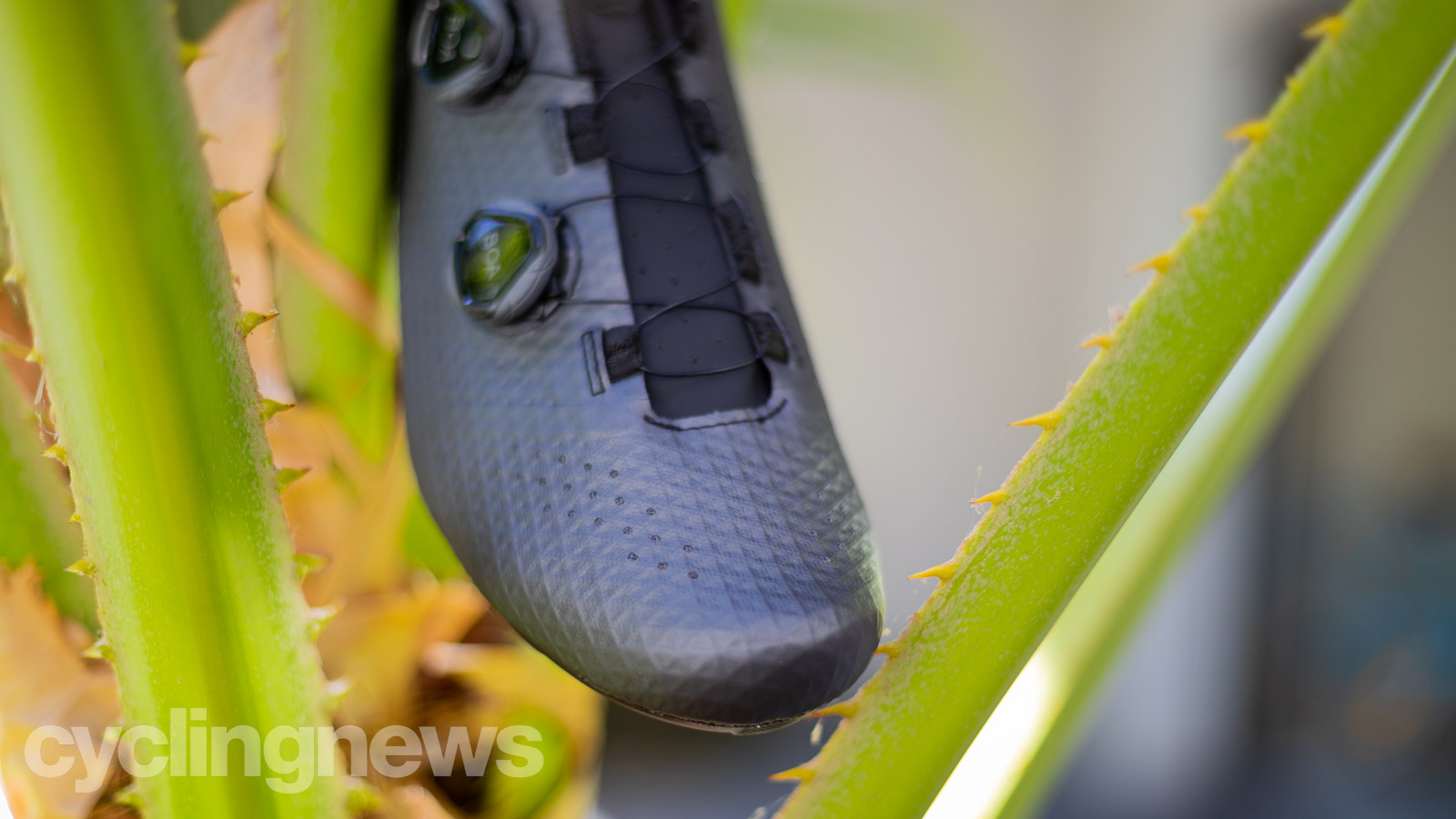
The top-drawer feature of the Regime is in the Synchwire, thermal-laminated Teijin TPU upper, that borrows its design from the Imperial. Composed of monofilament mesh that is, nonstretch breathable and supple, the material is coated in TPU (Thermoplastic polyurethane) to add some structure and stability.
The upper isn’t exactly the same as the Imperial or the Empire SLX (which has also swapped to Synchwire), but the TPU covers a larger surface area of the shoe and lacks the support ribs found below the Boa/lace eyelets on more expensive boots. Because of this, the large open-mesh panels have replaced with what can be described as perforations in the TPU layer over the front two-thirds of the shoes.
The Synchwirer upper is manufactured in a single piece and is devoid of any seams that would potentially cause hotspots or discomfort. In this same manner, Giro has also opted for fabric cable guides instead of plastic, furthering the pliancy of the uppers and saving a few grams in the process.
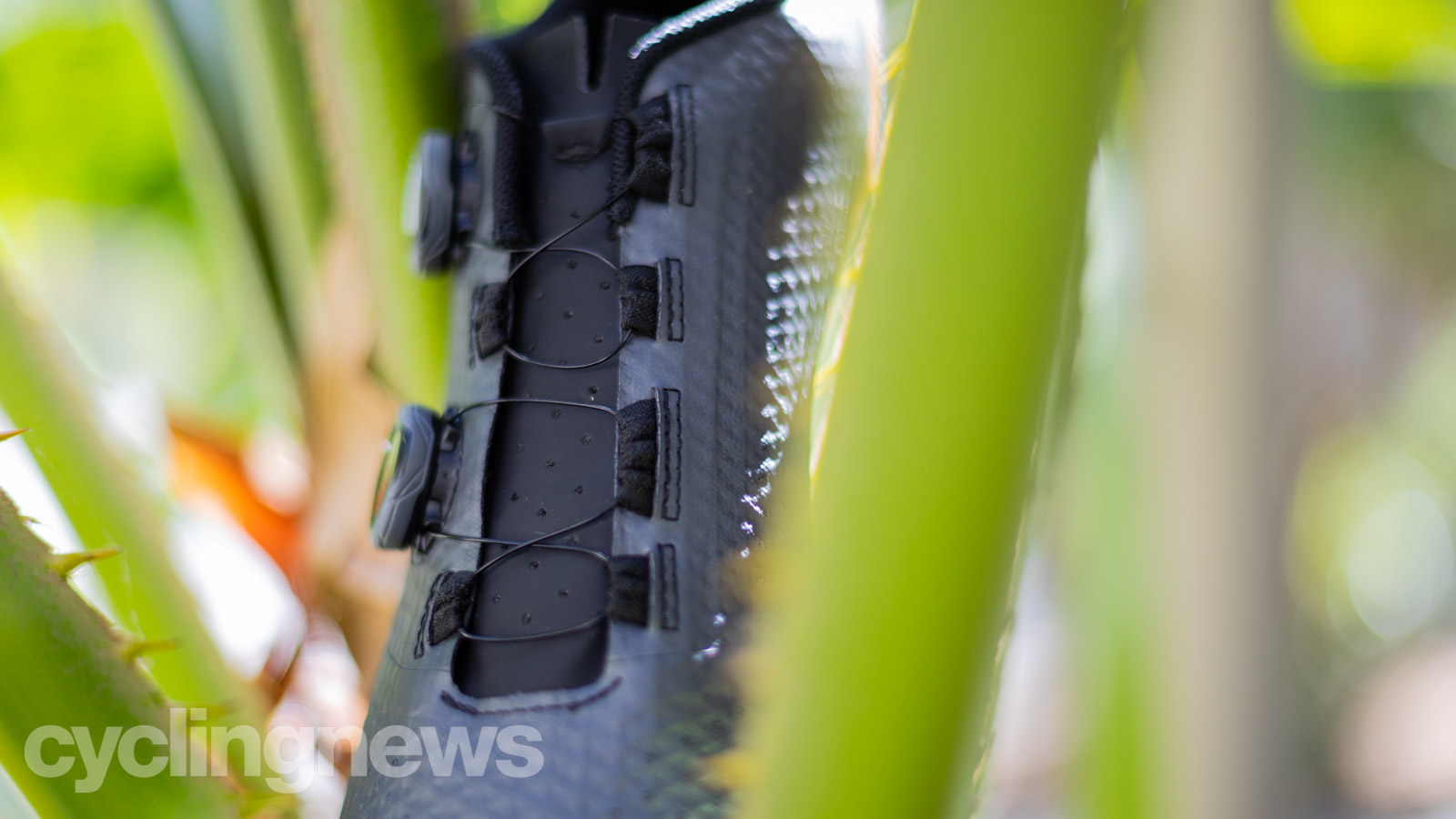
Retention is taken care of by way of dual Boa L6 dials. While they are lower profile than the IP1 version, the L6 only allow for one-way micro-adjustments — the pop-release is required to back off the wire tension.
On the bottom is a carbon composite sole, with moulded TPU bumpers for walking. In recent years Giro has moved away from the traditional stiffness ratings that offer no comparative value across shoes from different brands. Instead, the Californian-based outfit has started rating its shoes by force - in this case, Newton millimetres. The sole used for the Regime is rated at 120N/mm, while the EC90 SLX plate (found on the Imperial and Empire SLX) is 140N/mm, the EC70 carbon sole is rated at 130N/mm, and the more budget-friendly options (Cadet and Stylus) measure in an 80N/mm and 60 N/mm respectively. The thinking behind using actual force measurements to rate shoes is sound, however, Giro is currently the only brand using this system.
The cleat hardware has 5mm of fore and aft adjustment, ideal for those who prefer a rearward cleat placement. Tipping our scales at 278g per side in size 45, they aren’t exceptionally lightweight shoes, but they aren’t porky either.
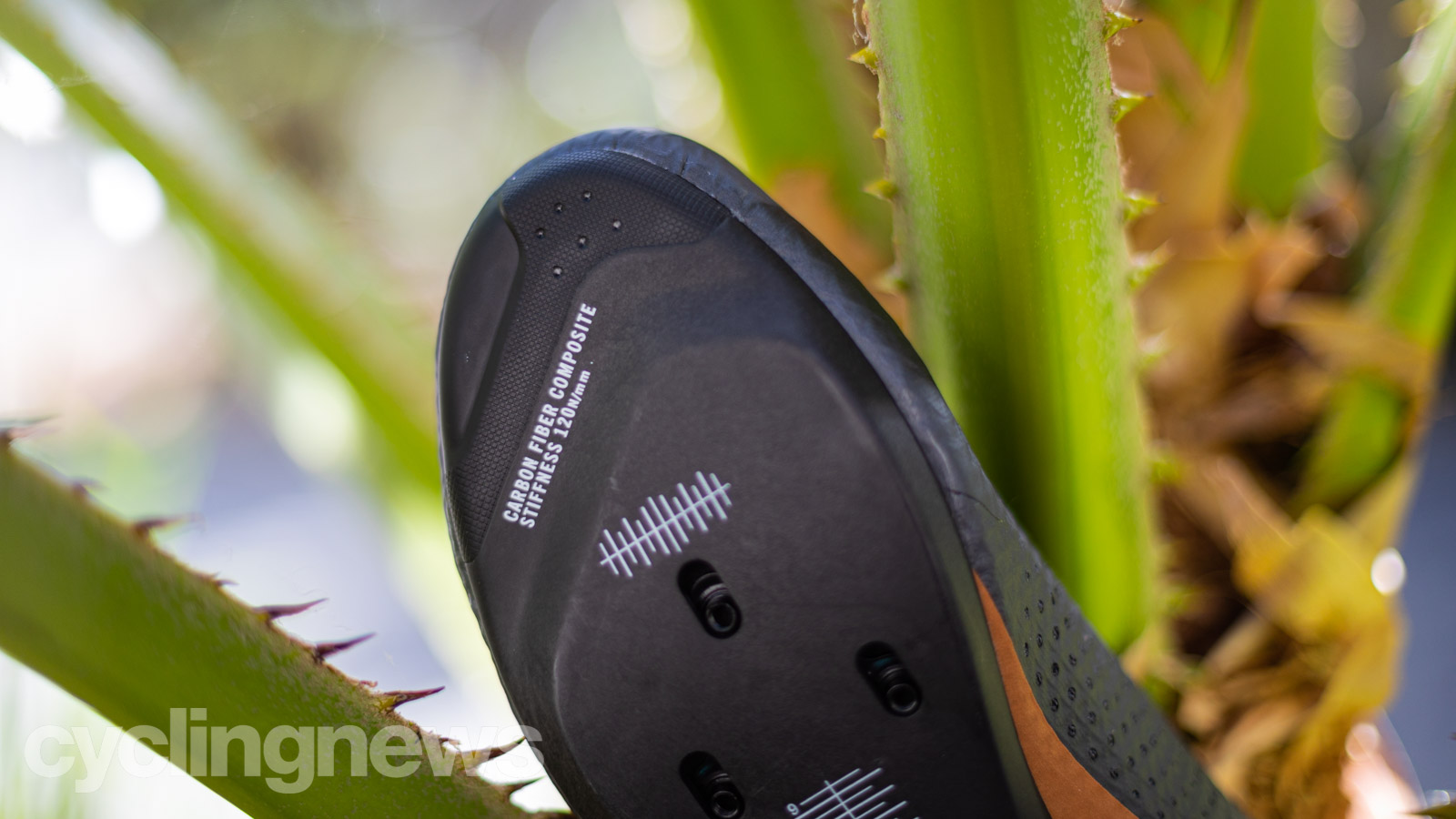
Ride experience
In terms of fit, the Regimes have an almost slipper-like feel; the Synchwire upper conforms to every nook and cranny of your foot. Coming straight out of a pair of Bont Vaypor S, the feel is at the complete opposite end of the spectrum — in more ways than one. Even with this softness and flexibility in the Synchwire, there is no stretch in the material, so once you tighten the shoes it provides the needed structure to prevent your ankle from collapsing. I did find I needed some additional arch support so I added a pair of the brand's Supernatural insoles as the included footbeds are quite basic.
The last is based on the same dimension as the Imperial and the newer Empires — the older iterations were notorious for being a bit tight across the toe box, something Giro addressed about a year ago. My feet generally get along with the shape of Giro shoes, even though they are quite a bit narrower than what I have been using recently. The Synchwire upper does well to conform around my foot without creating an uncomfortable hotpot.
Even though the upper is made from Giro’s Synchwire, it’s not identical to that found on the higher-end shoes. There are no large open panels for airflow and the material itself is thicker all around, and I wouldn't classify these as lightweight, high-summer shoes either. Don’t get me wrong; they still breathe pretty well, but not quite to the, ‘I can see what colour socks you’re wearing’ level as with other Synchwire shoes.
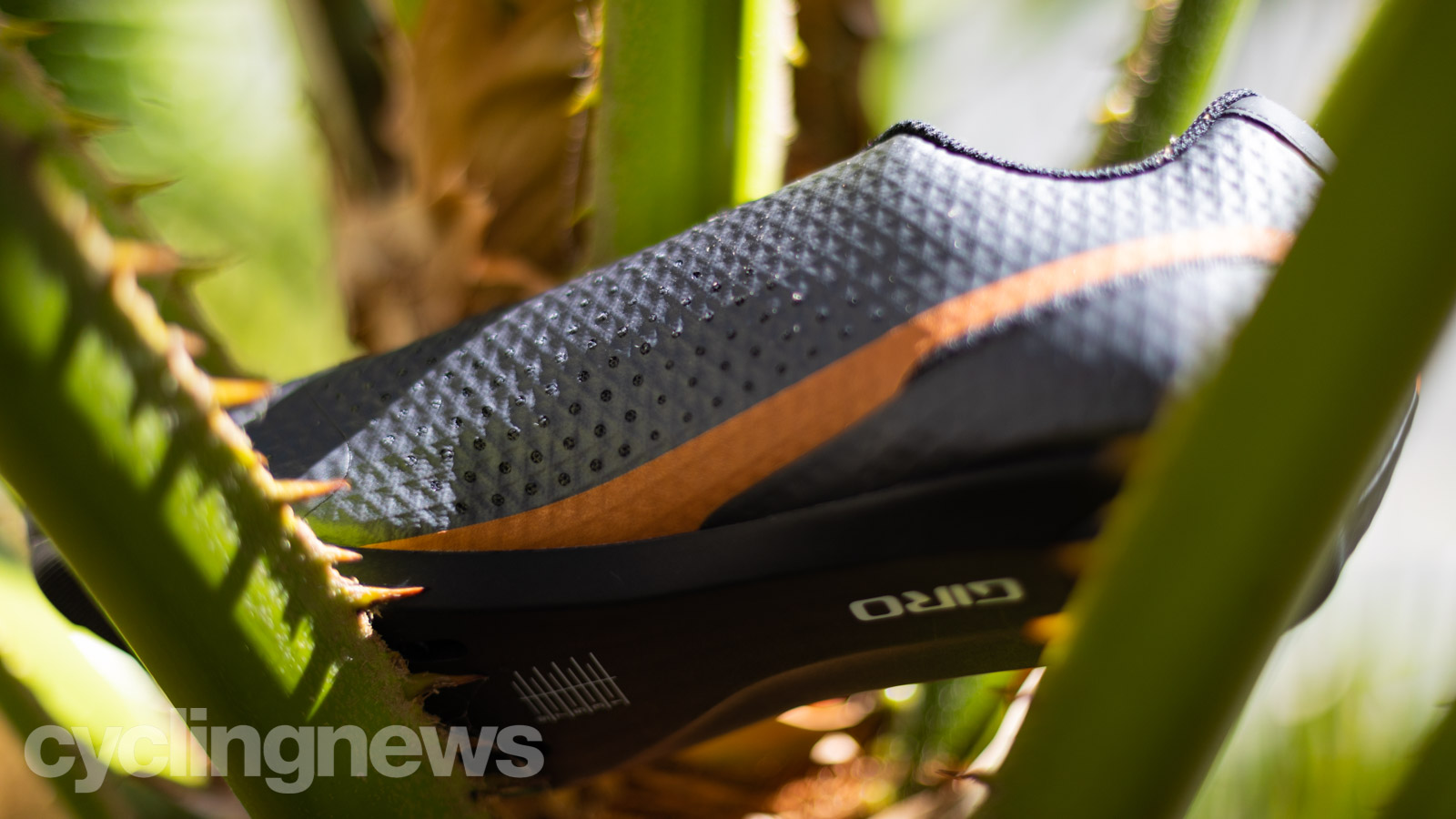
When shoes in this price range do possess Boa dials, they typically only feature a single reel that cranks everything down evenly across the foot. I usually like to tension the top of the shoe to ensure my foot is fully seated in the heel cup and for support while leaving the toe box looser until the pace begins to heat up. With a single Boa, there just isn’t that level of adjustability and when there is something like a velcro strap, it’s quite a vague modification and hard to dial in, especially on-the-fly. The L6 dials offer fantastic micro-adjustability as you tightening them down, but lack the two-way turnability of the fancier reels when going one click too far.
With a carbon composite sole, the stiffness on offer from the Regime is impressive. Even during out-of-the-saddle stomping on the pedals, it was difficult to detect any flex through the shoe. They still offer some of the snap you’d look for in a set of race boots, but it’s not quite as responsive as Giro's high-end Imperials.
In recent weeks I’ve been experimenting with a few road pedal setups on local gravel loops and I’ve been impressed by the way these shoes dampen the high-frequency buzz. They're impressive.
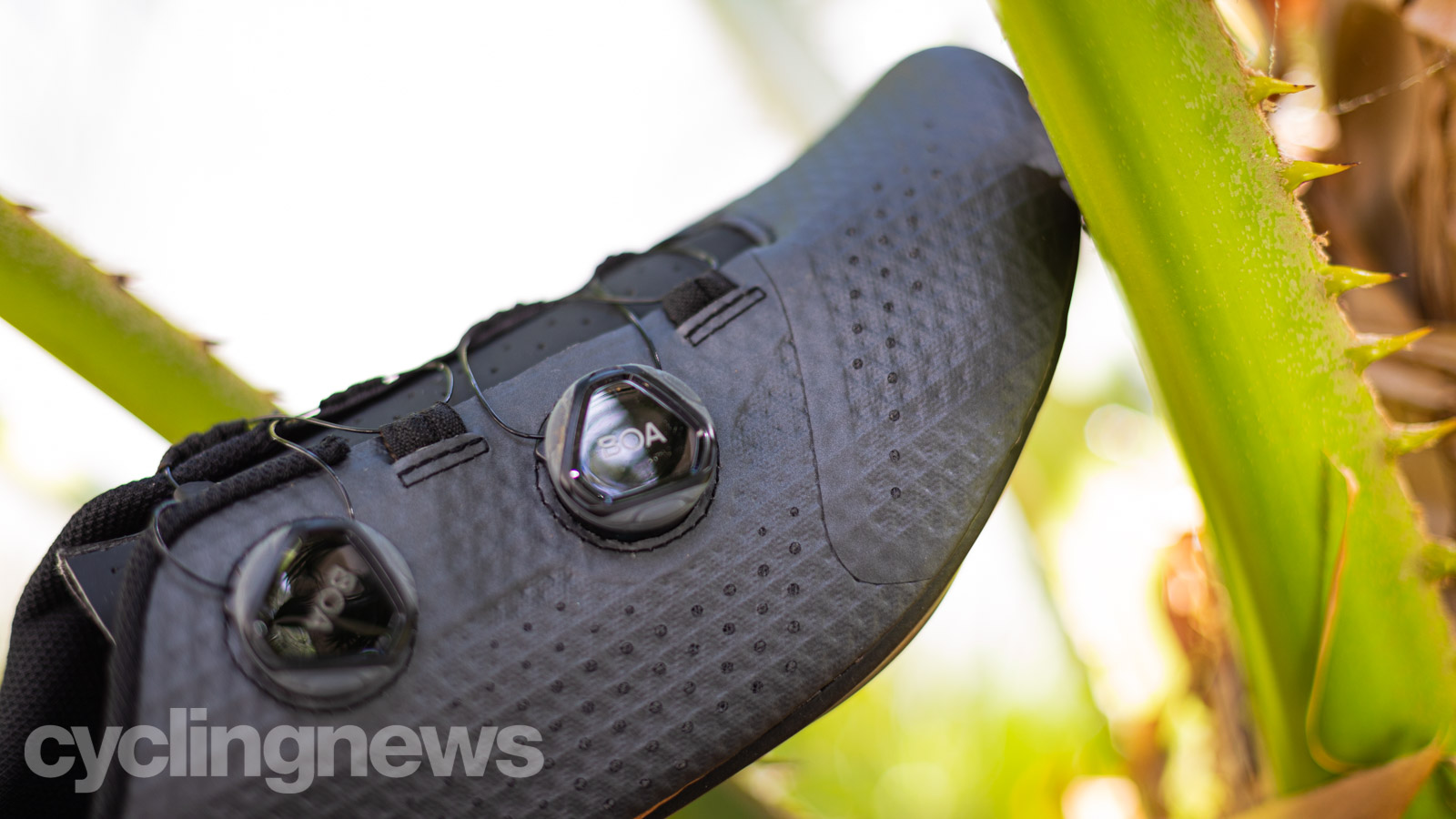
Verdict
While Giro’s top-tier shoes have always been showstoppers in terms of performance, I’ve always felt its mid-range offerings were a little lacklustre — until now.
Between the support and suppleness on offer from the Synchwire upper, to the performance of the carbon-composite sole; if you’re not pinning on a number every weekend and churning out 6.0w/kg for an hour, the Regime is all the shoe you need.
The Giro Regime road shoe is the poster child for trickle-down technology done right. For the asking price of $225 / £220 / AU $350, it offers fantastic value for money - in fact, if I were looking for a new pair of Giro kicks I'd choose these over the more expensive offerings every time.
Tech Specs: Giro Regime road shoes
- Weight: 278g per side Size 45 (Actual, without cleats)
- Outsole: Carbon composite
- Stiffness index: 120 N/mm
- Retention: Boa L6
- Colours: Black, Carbon/Copper, White
Based on the Gold Coast of Australia, Colin has written tech content for cycling publication for a decade. With hundreds of buyer's guides, reviews and how-tos published in Bike Radar, Cyclingnews, Bike Perfect and Cycling Weekly, as well as in numerous publications dedicated to his other passion, skiing.
Colin was a key contributor to Cyclingnews between 2019 and 2021, during which time he helped build the site's tech coverage from the ground up. Nowadays he works full-time as the news and content editor of Flow MTB magazine.
